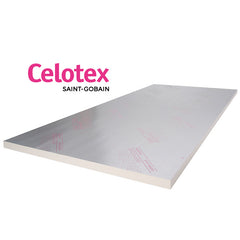
Do you want to know how to insulate a floor? Insulting a floor comes with many multi-faceted benefits, and with so many options, it’s difficult to know where to start. Well, you’ve come to the right place. Read on to explore more about floor insulation, and discover our easy-to-read step-by-step guide on insulating a floor.
In this article, you will learn:
- The What and Why of insulating a floor
- The benefits of insulating a floor
- Choosing the right material for insulating a floor
- The best products for insulating a floor
- How to insulate a floor in an easy-to-read step-by-step guide
What is floor insulation and why do I need it?
Floor insulation is a thermal material installed beneath the floor of a building. It is used to regulate temperature and can also increase your home's energy efficiency, helping you save money on energy bills.
Insulating your floor can improve the comfort of the occupants by providing a comfortable surface temperature and protect your flooring from moisture damage and decay.
The benefits of insulating a floor:
- Keep your home warm
- Helps to preserve flooring
- Reduce energy bills
- Reduce carbon footprint
- Reduce noise pollution in your home
Choosing the right material for insulating a floor:
When choosing the right material for insulating a loft, it is important to consider its R-value, or its ability to resist heat transfer. The higher the R-value, the better the material will be at insulating your space.
Another factor to consider when choosing floor insulation is the type of flooring you have. If you have hardwood floors, you will need to choose a material that is compatible with hardwood floors. If you have tile floors, you must select a material compatible with tile floors. It is also important to consider the size of the floor, your budget, and your personal insulation expectations.
The best products for insulating a floor
Here at Insulation Kings, our Polystyrene EPS70 insulation sheets are designed for optimum thermal performance and are available in a variety of sizes for your individual needs.
How to install insulation for a floor with Polystyrene EPS70
DISCLAIMER: This guide acts as a brief outline for floor insulation. Be sure to consult a professional before starting your project.
Step 1:
Begin by measuring the dimensions of your floor. You want to ensure you know exactly how much Polystyrene EPS70 insulation you will need for the project.
Step 2:
Measure and cut the sheets to fit, with a margin for error if necessary. For greater precision, use a utility knife or electric saw to make sure the pieces are perfect fits for each corner or angle in the floor space.
Step 3:
Once all the pieces have been cut and prepared, lay them out and dry-fit them before attempting to attach them to the flooring material below. This allows you to make any needed adjustments before applying adhesive or fasteners.
Step 4:
Take extra care to ensure that no air pockets remain between adjacent pieces of insulation when laying them out on your floor space, these will reduce its thermal efficiency significantly and could potentially cause issues over time due to moisture accumulation in those areas.
Step 5:
Apply an adhesive designed specifically for use with polystyrene EPS70 insulation, following the manufacturer’s instructions closely and allowing ample drying time between coats as necessary. Take care to apply even pressure across all surfaces in order to ensure full contact between adjacent pieces of insulation and also with underlying surface materials like wood or concrete.
Step 6:
If desired, use appropriate fasteners such as screws or nails at intervals around each piece of insulation in order to provide additional hold against movement over time; follow manufacturer’s guidelines carefully here as well since incorrect use destabilise your insulation.
FAQ'S
How do I know if I need floor insulation?
You can tell if you need floor insulation in a number of ways. One of these is to simply check if your floors are cold. If your feet are feeling chilly every morning, you need floor insulation.
If your home is very old, you may also need floor insulation, as it will likely have been built without any. Furthermore, if your energy bills are high, floor insulation can reduce energy consumption and lower energy costs.
How much will floor insulation cost?
This depends on a few things. Consider the size of your room, the type of floor insulating material you want to use and your personal insulation needs and goals.
What are the benefits of floor insulation?
The benefits of floor insulation include lower energy costs, reduced carbon footprint and noise pollution, and a more comfortable regulated temperature inside your home.
Can I insulate my floor myself?
Absolutely. With our easy-to-read guide on floor insulation, you can become a DIY natural.
Get in touch with one of our expert team today! We are on hand to answer all your insulation questions and queries and get you on the road to perfect insulation.
DISCLAIMER: The contents of this guide are intended for information purposes only. Insulation king shall not be liable, answerable or accountable for any loss or damage resulting from the advice given
 DIY Difficulty Level
DIY Difficulty Level 
